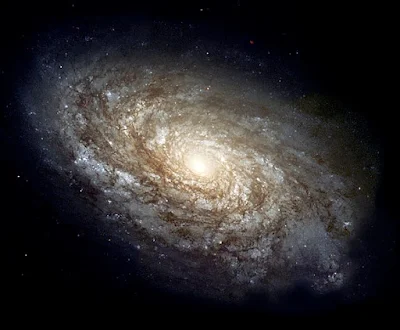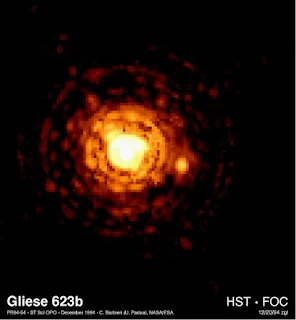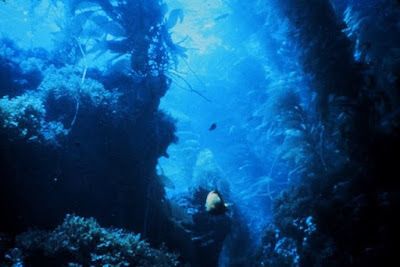65+ Interesting Facts About the Universe
- All the galaxies, stars, planets, moons, intergalactic space, energy, and matter are part of the universe.
- Everything in the universe is in motion. This constant motion is mainly due to gravitational, electromagnetic, and nuclear forces. (Source)
- According to a 2003 estimate, there are more stars in the observable universe than the number of sand grains on earth. (Source)
- Most of the studies show that the universe may be flat. But the latest research suggests that the shape of the universe is similar to a closed sphere. (Source)
- Halley’s Comet is a periodic comet that returns to the vicinity of the earth after every 75 years. It is named after Edmond Halley, who discovered the return of this unique comet. Halley’s Comet was initially viewed in 239 B.C. and the last time in 1986. According to estimates, it will return to the earth’s vicinity in 2061. (Source)
- According to a commonly accepted Big Bang theory, the universe came into being around 13.8 billion years ago through a "big bang."
- The universe is composed of Dark Energy (68.3%), Dark Matter (26.8%), and Ordinary Matter (4.9%). All the stars, planets, and other known objects are made from Ordinary Matter.
- The Universe was extremely hot and dense at birth. In just 3 minutes after its birth, the temperature of the universe dropped 1 billion degrees Celsius. The temperature further cooled to 3000 degrees after 300,000 years. (Source)
- UY Scuti is the largest known star in the universe. The radius of this hypergiant is 1,700 times larger than the sun’s radius. UY Scuti is located near the center of the Milky Way and was discovered in 1860. (Source)
- Lucy, a white dwarf star, is the largest known diamond star in the universe. It was named after a Beatles song.
- Planets usually orbit their stars. But few planets roam freely without any star and are known as “Rogue Planets.” So far, only a few rogue planets have been discovered in Milky Way Galaxy. But it is expected that there are billions of rogue planets in our galaxy. (Source)
- Dark energy and dark matter are invisible and cannot be detected with current instruments. Both these forces are still mysterious to scientists. (Source)
- In 2011, NASA’s Kepler spacecraft discovered the darkest planet in the universe that reflects less than 1% of the light it receives from its star. TrES-2b is the size of Jupiter. One side of this planet always faces the star. No other planet or moon is comparable to this planet. (Source)

TrES-2 is the darkest planet in the universe - The universe is expanding continuously, and Dark Energy is responsible for accelerating the expansion of the universe.
- According to the latest research, the expansion rate is different in different parts of the universe. (Source)
- According to estimates, the diameter of the observable universe is around 92 billion light-years. The entire universe is at least 250 times larger than the observable universe, i.e. at least 7 trillion light-years across. (Source)
- Looking at stars at night is seeing them back in time. It is because the light of these stars reaches us after a few decades or hundreds of years. The Hubble telescope allows us to look millions of years back.
- In 1977, a strong 72-second-long signal from space was considered a message from some alien. However, astronomers now believe a pair of comets produced this signal. (Source)
- USA and USSR conducted several high-altitude nuclear explosions in space between 1958 and 1962.
- Some
astronomers estimate there are between 100 and 200 billion galaxies in the
observable universe. However, others believe the exact figure to be around 2 trillion
galaxies. (Source)

There are nearly 2 trillion galaxies in the observable universe
- According to the latest study, the first known galaxy was formed 380 million years after the big bang. (Source)
- A
single galaxy can be as small as having a few million stars and as huge as
containing three hundred trillion stars. (Source) (Source)
- Four types of galaxies have been identified in the universe. These include spiral galaxies, barred spiral galaxies, elliptical galaxies, and irregular galaxies. Milky Way is a barred spiral galaxy. (Source)
- According to standard theories of cosmology, the universe has no center. It is expanding equally in all places. (Source)
- Outer space begins about 100 km above the earth. It is dark and silent due to the absence of air. (Source)
- All the mass in the universe is due to Higgs Boson Particle. Higgs Boson was discovered in 2012 by the Swiss research lab CERN. (Source)
- In the whole universe, about 10% area is covered by groups and clusters of galaxies, while the remaining is Intergalactic Space.
- After its death, a star transforms into one of the three different objects according to its size. These are white dwarfs, neutron stars, and black holes.
- A Neutron star has been rotating at 716 times per second. It is more than the fastest spinning speed previously considered possible for any object in the universe. (Source)
- Apart from Milky Way, the only other galaxy visible without a telescope in the Northern Hemisphere is the Andromeda Galaxy. Two dwarf galaxies, the Large and Small Magnetic Clouds, can be seen from Southern Hemisphere with the naked eye. (Source)
- A Black Hole is an area in the universe with such strong gravitational force that even light cannot pass through it. The first black hole was discovered in 1971.
- The universe got its initial light more than 240,000 years after the Big Bang. It happened due to the collision of hydrogen and helium atoms with free electrons. (Source)
- Every year, 40,000 tons of cosmic dust fall on earth. Everything in the universe originated from stardust. (Source)
- In the observable universe, more than 275 million stars born and die daily. (Source)

More than 275 million stars born and die every day - When a massive star explodes, it sometimes
produces the brightest and strongest event in the universe known as a gamma-ray burst
(GRB). It lasts a few seconds to several minutes and releases so much energy
that our sun can produce in 10 billion years. (Source)
- Quasars are present around black holes. These are the second-most brightest objects in the universe after a gamma-ray burst. They can emit more light than 100 galaxies. (Source)
- A group of 73 quasars stretches to more than 4 billion light-years. Comparatively, the Milky Way galaxy is 100,000 light-years across. This LQG (large quasar group) is one of the largest structures in the universe. (Source)
- At a distance of about 12 billion light-years (1 light year = 6 trillion miles), there is a water reservoir around a black hole, quasar, which has 140 trillion times the water in all the oceans in the world. This largest and farthest water reservoir was discovered in 2011.
- The icy structure in the center of a comet is called a nucleus. The comet’s nucleus is spongy, having many holes inside. (Source)
- Russian cosmonaut Valery Polyakov has the record for the longest stay in space, which continued for 437 days. American cosmonaut Christina Koch holds the record for the longest continuous stay for a female after living in space for 328 days. (Source)
- Famous scientists like Stephen Hawking, Max Tegmark, Brian Greene, and many others support the idea of the multiverse. According to this theory, several other universes exist apart from the universe in which we live.
- In opposition to Black Hole, there is a concept of a region in space known as the White Hole that emits light and matter. According to the Theory of General Relativity, nothing can enter a white hole.
- An Earth-like planet, discovered in 2004, is made largely of diamonds. At least 33% mass of this planet is pure diamond. (Source)
- In 2016, astronomers picked up hydrogen signals from a galaxy 5 billion light-years away. These signals originated even before the formation of earth. (Source)
- According to the latest findings, quarks (protons and neutrons are made of three quarks each) and electrons are the smallest particles in the universe as they are indivisible. But there could be smaller things in the universe, according to a few scientific theories. The few possible smallest things in the universe include a loop of string, the singularity at the center of a black hole, and the Planck length. (Source)
- Saraswati Supercluster is the largest known structure in the universe. The diameter of this supercluster is over 650 million light-years. (Source)
- Voyager 1captured the most distant image of the earth in 1990. It was taken at a distance of 3.7 billion miles from the sun and is known as the “pale blue dot.” (Source)

Most distant image of earth at a distance of 3.7 billion miles - Many physicists believe the universe will end after 2.8 to 22 billion years. According to various theories, the ultimate fate of the universe will come via Big crunch (shrink, decrease or decay), Big Rip (maximum expansion and destruction), or Big Freeze. (Source)
- According to another theory, the universe is infinite and may continue to expand forever. (Source)
- Cosmic microwave background (CMB) is the leftover radiation from the Big Bang. CMB is present everywhere in the universe but is invisible to the naked eye due to its extremely low temperature. (Source)
- The outer space smells like welding fumes or charred meat due to specific particles release during nuclear reactions. (Source)
- The most complex object in the universe is the human brain. It has 100 billion neurons and each neuron is connected to 10,000 other neurons. (Source)
- Some part of “snow” on analog TV and “white noise” on FM radio is composed of Cosmic Microwave Background (CMB). (Source)
- A constellation is a group of stars that appears as a picture in the sky. There are 88 constellations in the night sky. These constellations are visible in different seasons.
- Two clean and flat surfaces of a similar metal will stick together permanently in space if brought into contact. It is known as “Cold welding” and happens without heat or melting of any material. (Source)
- Stars appear to twinkle in the night sky due to the effects of varying winds, temperatures, and densities. (Source)
- The cost of a NASA spacesuit was between $15 million and $22 million. It is equivalent to today’s cost of $150 million. The most expensive part of a spacesuit is the gloves. (Source)
- The ISS (International Space Station) travels around the earth’s orbit at 17,150 mph (or 5 miles per second). This speed allows the ISS to orbit the earth once every 92 minutes. (Source)
- International Space Station is the 3rd
brightest object in the sky. It is visible to more than 90% of the earth’s
population. (Source)
- International Space Station (ISS) is the biggest object sent by humans into space. It is larger than a football stadium and weighs 450 tons. (Source)
- Red dwarfs are the most common and longest-lived stars. These stars can live for trillions of years. (Source)

Red dwarf stars can live for trillions of years - An exoplanet (Gliese 436 b) is orbiting a red dwarf around 30 light-years from earth. This planet has a large concentration of an ice substance despite having a temperature of 526 C (980 F). (Source)
- Spending time in space can grow the height of astronauts by 2 inches or more. (Source)
- Spacecraft helmets sometimes have Velcro patches that assist astronauts in case of itching.
- It is not possible to burp in space due to the absence of gravity. (Source)
- The supernova was initially documented in 185 A.D. by Chinese astronomers. It remained visible for eight months. (Source)



Comments
Post a Comment